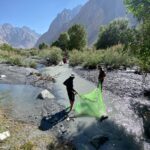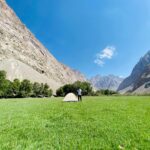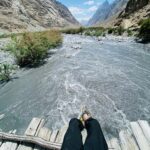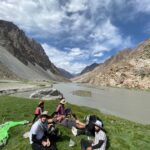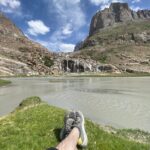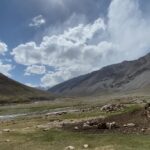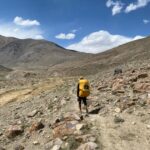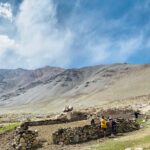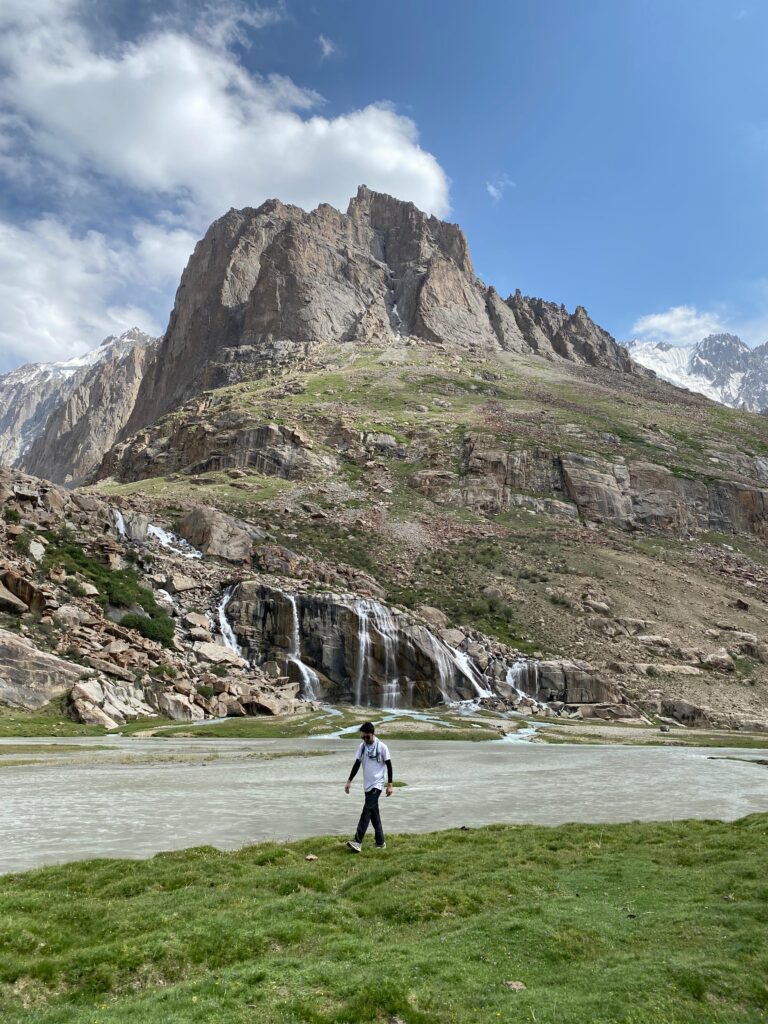
Elevation: ~4500m | Region: Misgar, Hunza, Gilgit-Baltistan, Pakistan
Trek to Where Three Empires Meet
Hidden at the edge of the Karakoram and the Pamirs, the trek to Kilik and Mintika Passes is not just a physical journey, but a historical passage through the crossroads of empires, intrigue, and ancient trade. Here, the frontiers of British India, Tsarist Russia, and Imperial China once met. This was the corridor through which the Silk Route moved goods and ideas—and later, spies, pilgrims, and political missions during the height of the Great Game.
Located at Misgar, a remote frontier village of the former Hunza Kingdom, this trek winds through a high-altitude landscape once defended by the Hunzakuts against incursions from Kyrgyz nomads. Misgar was settled in the 1860s by order of the Mir of Hunza, precisely to secure these valuable pastures and borderlands. The significance of this trail is immense: from Islamic missionaries preaching Ismailism to British officers in disguise, many left their footprints here—including Lord Curzon, the Viceroy of India, who is said to have trekked this route in the 19th century.
Today, this route remains a remote, rarely-traveled gem, leading adventurers into the Little Pamir, past alpine meadows, historic gravesites, and serene, fish-filled streams.
Permits & Preparations
- Permits/NOCs: Required for all non-locals, issued by the Pakistan Army Headquarters in Gilgit.
- Registration: Mandatory at the Sost Checkpost, before proceeding toward Misgar and Qalandarchi Fort.
- Logistics: A local guide is highly recommended. The area is sensitive and close to the Afghan and Chinese borders.
- Best Season: Late June to early September, when the passes are snow-free and the meadows are lush.
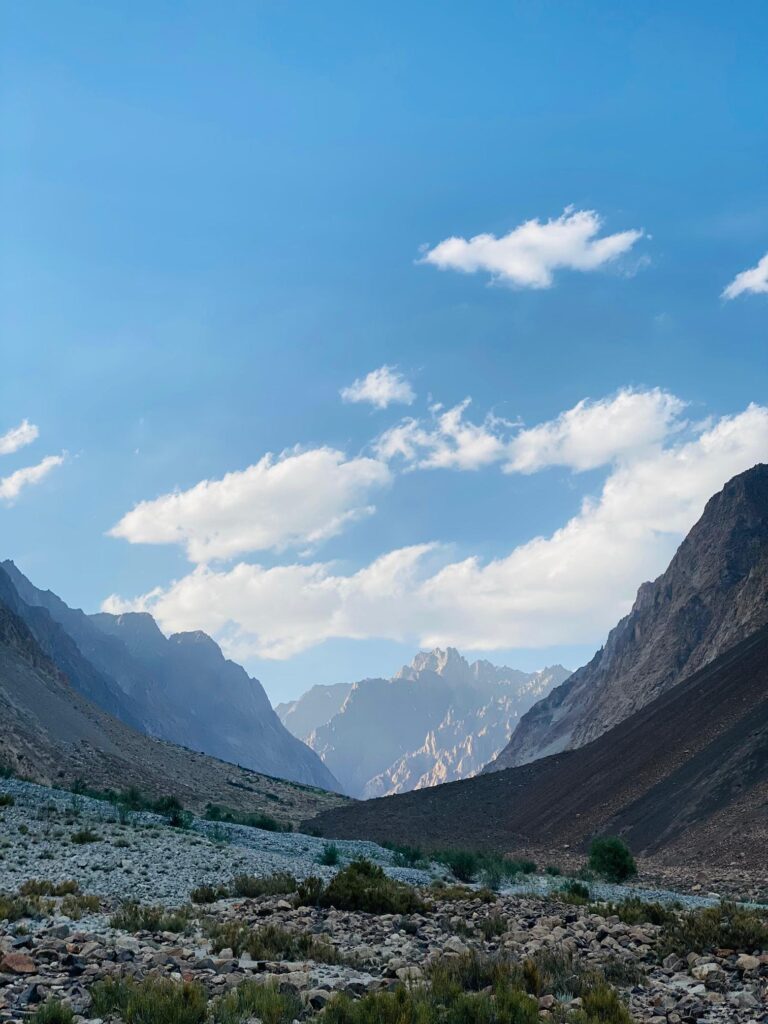
Trek Itinerary & Route Overview
Day 1: Sost to Qalandarchi Fort (Drive) → Trek to Lup Jungle (Overnight Camp)
- Drive: 1 hour from Sost to Qalandarchi Fort, an old military outpost.
- Trek begins here, passing resting points:
- Rung Hel – a cold-water spring.
- Pot Hel – a scenic spot with water channels.
- Reach Lup Jungle, in 3-4 hours, the first major campsite.
- Enjoy fishing in the stream.
- Lush pastures and shady areas ideal for tents.
- Note: Start early—sun can be intense and shade is minimal.
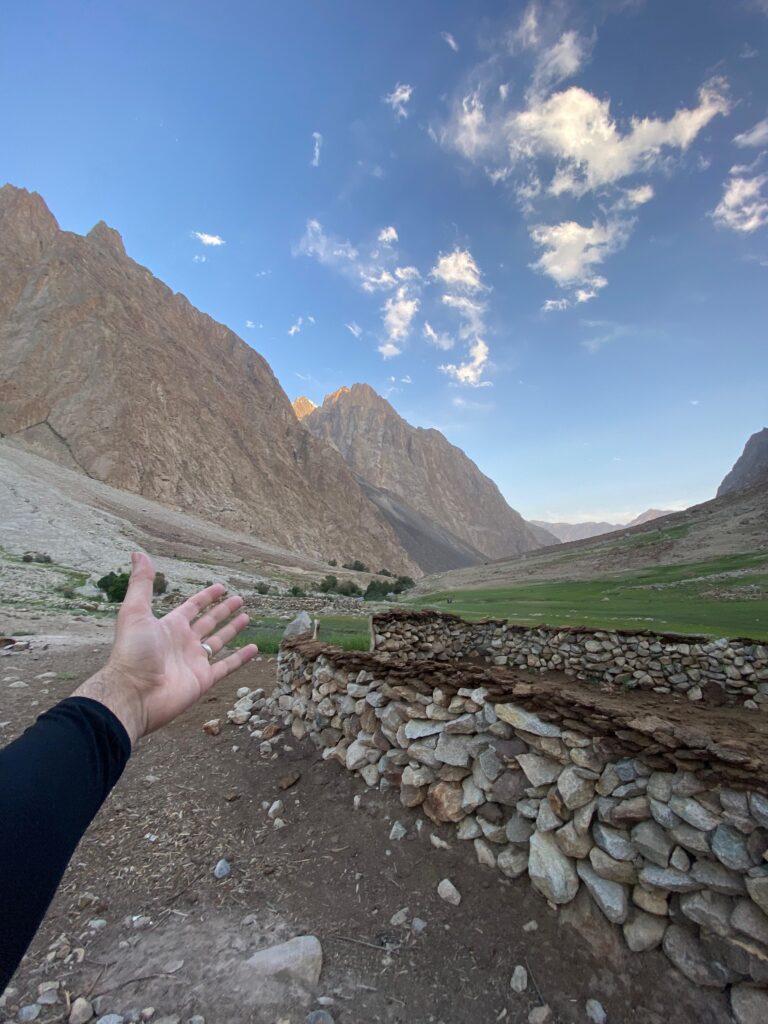
Day 2: Lup Jungle → Murkushi Junction (Old Silk Route Crossroads)
- Trek Duration: 3 hours.
- Terrain: Gradual ascent along an open valley with stunning views.
- Murkushi: The fork in the trail where paths split to:
- Left: Kilik Pass.
- Right: Mintika Pass.
History Highlight:
Murkushi was once a Silk Route caravanserai where traders rested, shared Pamiri cheese and tales—or faced occasional looting. In the 1860s, a conflict occurred here between Hunzakuts and Kyrgyz raiders, and graves of Kyrgyz nomads still remain nearby.
Option A: Mintika Pass Route (~3–4 hours from Lup Jungle)
- After Murkushi, the trail ascends gently toward Mintika.
- Key stop:
Juljul Hel (~2 hours from Murkushi)- A green paradise with waterfalls and alpine meadows.
- Towering rock faces surround this untouched haven—ideal for rock climbing and photography.
- Campsite with excellent fishing.
- Beyond Juljul Hel:
- Two Harais (shepherd huts) are available for overnight stay.
- Final push to Mintika Pass (4500m) offers views of China’s Pamirs and the Little Pamir plateau.
Option B: Kilik Pass Route (~3–4 hours from Murkushi)
- Path gradually rises through wide-open pastures.
- Midway stop:
Sherin Maidan- Historic plain where Kyrgyz and Hunzakuts played polo and the fierce Buzkashi—a game where horsemen snatch a sheep carcass in a battle of strength and speed.
- Final camp:
- Harai near the border with China and Afghanistan.
- Kilik Pass (4500m): The true confluence of three ancient powers—British India, Russia, and China.
- From the pass, one can see paths diverging:
- Haphu Chhan Harai leads towards Afghanistan (Wakhan Corridor).
- Other routes trail into the greater Chinese Pamirs.
- From the pass, one can see paths diverging:
Extension: Combined Kilik–Mintika Circuit
- Adventurers can do both passes as a circular route.
- From Mintika, descend back to Murkushi, rest, and continue toward Kilik Pass.
- Requires an extra day and strong acclimatization.
- Offers complete immersion into Pamir’s rugged geography and history.
View this post on Instagram
Highlights
- Remote, untouched Pamir meadows and streams.
- Real encounter with the ancient Silk Route and Great Game espionage history.
- Panoramic views of Afghanistan, China, and Pakistan.
- Opportunity to fish, camp, and climb in one of Pakistan’s least-explored trekking routes.
- Cultural sites: graves of Kyrgyz nomads, ancient Harais, and trader resting sites.
Tips & Considerations
- Acclimatize well before attempting 4500m passes.
- Weather changes rapidly—carry layers, sun protection, and rain gear.
- No phone signal after Misgar—carry satellite communication if possible.
- Respect local customs and be mindful of border sensitivities.
- Avoid camping directly at the passes; strong winds and exposure can be extreme.
This is not just a trek—it’s a journey into time, a trail through the epic backstory of Central Asia, where empires clashed, faiths spread, and geography shaped geopolitics.

